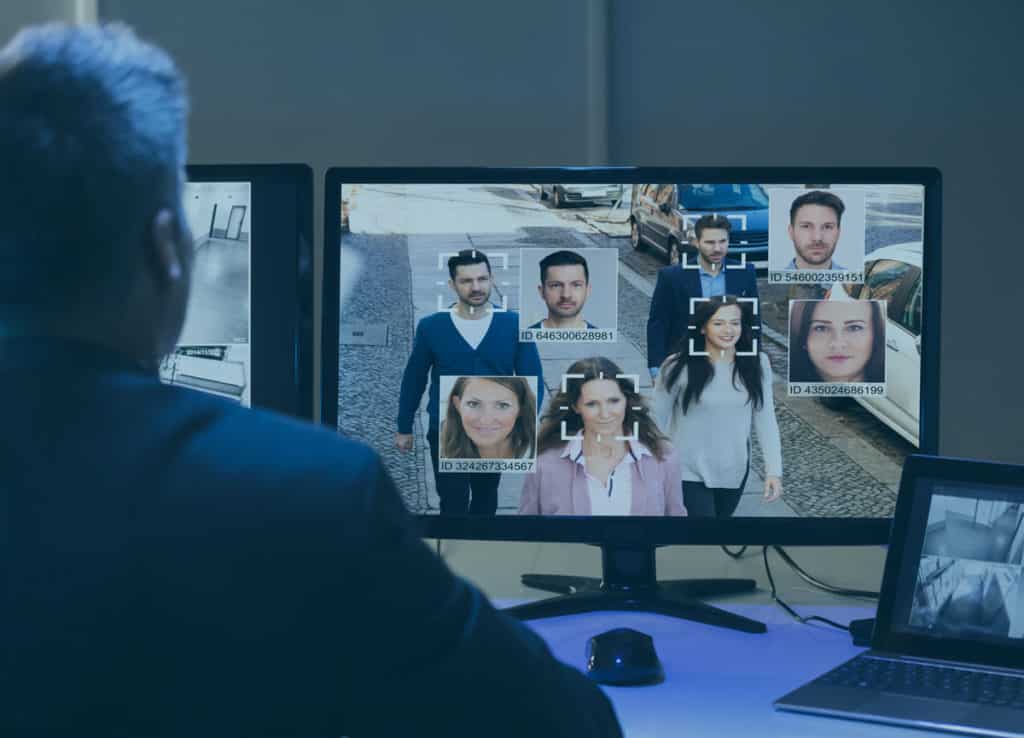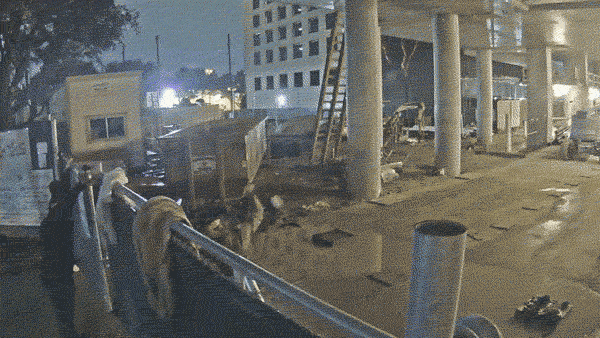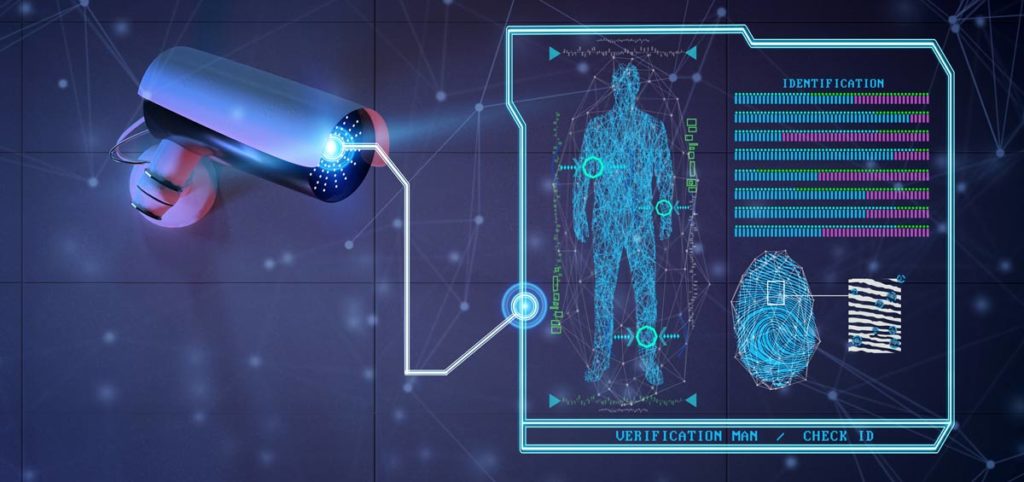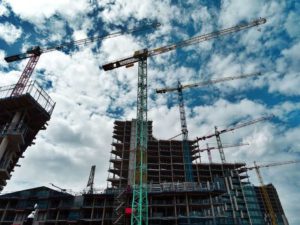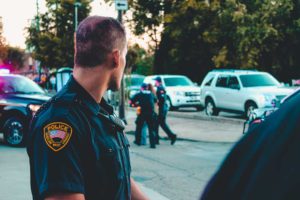Modern security solutions are affordable enough to place in any business, and they include powerfully intelligent technology to help address your toughest security challenges. Placing an artificial intelligence camera in a business can change the game dramatically for criminals. But what makes an AI security camera smart? How can AI security camera software help you win the battle against criminal activity?
Artificial Intelligence for Security Camera Systems
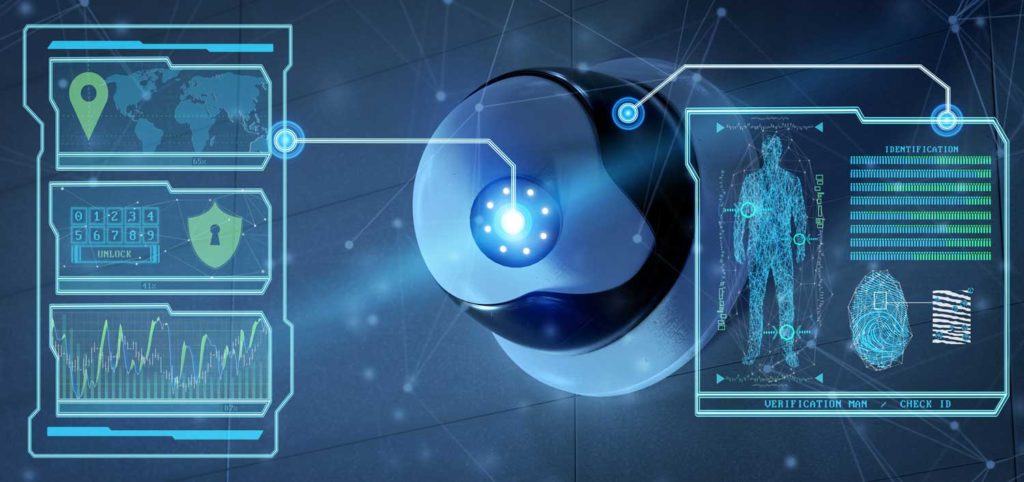
Far from being science fiction, artificial intelligence (AI) is a discipline of computer science geared toward finding ways to make software smarter, more intuitive, and easier for humans to use. The goal of AI is to allow computers to make decisions and “learn” in the same ways that humans can. When applied to video surveillance, AI security cameras are pre-programmed to act autonomously to respond to suspicious events.
An artificial intelligence security system leverages the same technologies used in this type of high-end computing. These systems typically include several component parts:
-
AI security camera hardware mounted on-premises
-
A wireless or hardwired connection to the internet
-
A remote server that receives video data from the business through the internet
-
Camera software with AI technology
-
Data analytics software in the cloud
AI security cameras use these components to run data analytics programs on the video feed they capture. This analysis uses the software algorithms to figure out patterns affecting business security. For example, the software in an artificial intelligence camera can identify specific objects, classify them, and make decisions based on that data.
Say a criminal is carefully reviewing your physical security in your parking lot. Each day, they drive the four corners of the property, park for long periods to take notes, and then leave. AI security camera software has the capability to capture these repetitious activities, analyze, and flag the behaviors as suspicious. It’s an ability that allows companies to proactively respond to the potential for criminal behaviors instead of always after the fact.
AI security cameras can determine the difference between a stray cat and a human lurking outside your business after hours. Being able to discern these differences cuts down on the volume of false security alarms. When combined with remote virtual security guard services, it’s very possible to produce a real-time proactive response to crime before it occurs.
AI can also provide insights into non-criminal behaviors, such as traffic patterns of human shoppers in a big box store. Retailers can use this data to design more effective interactions with their customers, making the shopping experience more comfortable and enticing.
How the AI video analysis does its work can be very interesting. Security Today says, “For instance, the system may be programmed to delineate an object that is taller than it is wide, with limbs moving in specified ways, and so on, and label this object a ‘person.’” This level of intelligence could mean the difference between a false security alarm and the capture of critical data leading to a criminal arrest.
AI security cameras can be programmed to detect and respond to humans with weapons. These tools can identify the difference between a human walking into a business normally and a human entering a business with a gun drawn. AI security cameras are typically connected to the internet and can use this high-speed pipeline to alert the police or a remote security team.
Companies are also spending billions on new facial recognition technologies. This represents the next evolution of AI, which will use video surveillance to scan each human face and then search a database of people to try to find a match. It’s the same technology that can unlock a cell phone. While this software isn’t widely available for business security applications, and currently faces some political, legal, and even ethical hurdles, it illustrates the next potential steps in smart security.
Facial recognition and other cutting-edge AI tools are currently in development and may not be widely available for commercial use anytime soon. Furthermore, because of the risks to privacy and civil liberties, some lawmakers recommend legislation to protect the public from abuse of these tools. A 2024 report from the National Academies of Sciences, Engineering, and Medicine recommends guidelines for the ethical use of these tools.
So, which features are already present in some of the most commonly used artificial intelligence security systems? How can AI video surveillance make an impact on your business right now?
How Businesses Use AI Security Today
AI’s integration with video surveillance technology is transforming how businesses approach security, operations, and decision-making. Here are some ways businesses are applying AI-enabled video surveillance right now:
Enhanced Security and Threat Detection
-
Anomaly Detection: AI algorithms can analyze video feeds in real-time and identify anomalies or unusual patterns that may indicate potential security threats. These features allow businesses to detect unauthorized individuals, suspicious behaviors, or unusual activities within a monitored area.
-
Object Recognition: AI can recognize and categorize objects in video feeds, helping businesses identify and respond to security incidents more effectively. For example, it can detect and alert security personnel about suspicious or violent activity.
Operational Efficiency and Insights
-
Crowd Management: AI-powered video analytics can monitor crowd movements and density in retail spaces, entertainment venues, or public events. This data can help businesses optimize layout and staffing to improve customer experience and safety.
-
Predictive Maintenance: AI can analyze video data from surveillance cameras placed in manufacturing or operational environments to predict equipment failures or maintenance needs. This proactive approach can reduce downtime and extend the lifespan of your critical assets.
-
Occupancy Monitoring: In the era of social distancing and capacity restrictions, AI can be used to monitor the occupancy of spaces, ensuring compliance with regulations. These features are especially relevant for businesses in the hospitality, retail, and event management sectors.
Data-driven Decision Making
-
Business Intelligence: Video analytics, when integrated with AI security cameras, can provide valuable business intelligence. These features allow businesses to understand customer behavior, preferences, and traffic patterns. Retailers, for instance, can optimize store layouts based on customer movement data captured through video surveillance.
-
Incident Investigation: AI-enhanced video surveillance facilitates faster and more accurate incident investigation. Video footage can be quickly reviewed and analyzed, helping businesses respond to incidents, accidents, or security breaches promptly.
-
Operational Optimization: Businesses can use insights gained from video data to make informed decisions about resource allocation, staff deployment, and process optimization. It’s a benefit that leads to more efficient operations and improved overall performance.
While AI in video surveillance offers numerous advantages, it’s crucial for businesses to consider privacy and ethical implications, ensuring that surveillance practices align with legal and regulatory frameworks. Clear communication and transparency with employees and customers about the use of AI in video surveillance can help build trust.
Three Ways AI Impacts Business
The potential impact of AI video security on a business is massive. Video analytics technology can recognize what is normal, and then discern the abnormal. For example:
-
An AI camera could recognize a human repeatedly standing or moving outside your construction site fencing after hours and determine that this is unusual.
-
In education, AI cameras can learn to recognize normal student traffic patterns between classes. They can also be programmed to alert to abnormal patterns like fighting or running.
-
These tools could also key into unattended bags left in public spaces and alert security teams.
The power of AI computing in video surveillance is that while a camera can observe a given behavior, the software can tell the difference between a false alarm and a real problem with a good degree of accuracy. Over time, the software improves by incorporating what it is learning into its functionality. This is called machine learning, and it is the heart of why AI video surveillance is so smart.
Unlike a human, whose attention span can wane over time, an AI security camera is always watching, learning, and reacting to threats in a business in real-time. Human fatigue and distraction can lead to a missed threat with a negative impact on a business and the people that frequent it.
This always-on feature is one of the true benefits for AI-based surveillance when it comes to a business. “CCTV monitoring is only as accurate and reliable as the person monitoring it on the screen. However, being humans, operators tend to miss out on crucial security clues at times which can lead to disastrous consequences for the organization.”
AI security cameras also have a huge impact on how data is captured, stored, and processed. Video surveillance collects a massive amount of information, making it unwieldy for a human operator to identify security incidents. With AI software, the most relevant video footage leading to a specific event can be tagged and categorized. From an Internet dashboard, video footage can be searched and pulled quickly and efficiently.
Today, artificial intelligence for security camera systems is eliminating human error and decreasing the chances of burglary, vandalism, violence, or other threats to a business. Pro-Vigil is standing by to provide you with a careful, customized analysis of the potential that AI security could bring to your business. We help companies reduce security risk. Contact us today.
Q&A
The future of AI security camera software for business is poised to revolutionize the way organizations safeguard their assets and personnel, ushering in a new era of intelligent and proactive security solutions.
Driven by advancements in artificial intelligence and computer vision technologies, the days of CCTV cameras are gone. As businesses increasingly prioritize security, intelligent surveillance systems are poised to become integral components of more comprehensive business security strategies. AI-powered security camera software goes beyond traditional video monitoring, offering advanced features like facial recognition, object detection, and behavior analysis.
When thinking about the future of AI in video surveillance, consider how these cameras enhance real-time threat detection response. AI algorithms rapidly analyze vast amounts of video data, identifying suspicious activities or potential threats with greater accuracy than human operators alone. It’s a proactive approach that can significantly reduce response times and enhance overall security effectiveness.
Integration with other smart technologies is another avenue that’s rapidly developing. AI security camera systems can collaborate with access control systems, IoT devices, and data analytics platforms to create a cohesive and intelligent security ecosystem. This interconnected approach not only strengthens physical security but also facilitates data-driven decision-making for operational improvements.
Finally, the future may see the application of AI in predictive analytics, enabling businesses to anticipate security risks and prevent them.
While AI brings significant advancements to security systems, there are ethical, privacy, and potential misuse issues that should not be overlooked.
For example, AI-powered surveillance systems equipped with facial recognition technology can lead to unwarranted tracking and profiling. Facial recognition sparked debates about the balance between security and privacy rights, emphasizing the need for robust regulations to ensure responsible deployment of these tools.
The potential for bias and discrimination in AI algorithms used for video surveillance is a pressing concern. If these systems are not carefully trained and tested, they may exhibit biased behaviors, leading to unjust targeting of certain demographics. Addressing biases and ensuring fairness in AI models is crucial to prevent unintended or even discriminatory consequences.
There is also the risk of misuse, as powerful surveillance technologies could be exploited for unauthorized surveillance or social control. Striking a balance requires clear legal frameworks, industry standards, and ethical guidelines to govern the development and deployment of AI in video surveillance.

